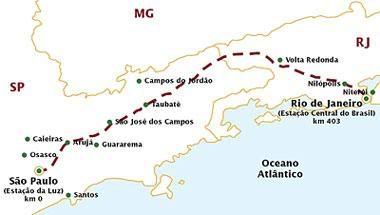Monday's biggest news came from Rio de Janeiro, where the Brazilian government held an auction for oil rights. Of course, these were not just any oil rights. They were the rights to the entire "Libra" oil field, the world's potentially largest discovery of oil since 2008, located deep in the ocean's floor 140 miles off the coast of Rio.
So perhaps it comes as no surprise that there was controversy. The left attacked the government for "privatizing" Brazil's natural resource. Businesses criticized the opaque auction process and the myriad conditions required in order to do business. There was some violence between protesters and police.
However, these were predictable events. The surprises happened in the weeks and months leading up to the auction, as the rules of the game were defined. The government envisioned 40 companies vying for the rights, and paying almost $1 million each, to bid for the 35 year concessions. Only 11 showed up. Missing were giants Exxon, Chevron, BP, and BG. Industry experts theorize that the requirements to use Petrobras as a minimum 30% partner and operator, along with sharing a minimum of 41.5% of profits with the state, may be just two of the obstacles that most likely account for the low participation. Another is that some companies may just not believe in the official estimates of 8-12 billion barrels of recoverable oil.
Even with only 11 participants, the government awaited several bids. However, the auction was over after five minutes. Only one bid was received - thus, the consortium of Petrobras (40%), two Chinese government controlled companies, along with Shell and Total, won the auction.
So, you ask, what does this all mean? What is the big picture?
First, it means that Petrobras, the money-losing, monopoly-holding energy giant - recently ranked the world's most indebted company by Merrill Lynch - will need to get its act together quickly. In order for Brazil to play among the world's leaders in oil production, Petrobras will need to be very efficient.
Second, it means potential opportunities for energy related companies in Brazil - especially in the upstream sector. This auction was just the first of many. There are potentially even more lucrative oilfields off the coast of Sergipe, located in the northeast of Brazil, to be explored in the future.
Third, companies can use this auction as example of doing business in Brazil. It represents a microcosm of the rewards and pitfalls of tapping into the country's large market. More on that in a future blog entry.
Fourth, Brazilian motorists will be paying more at the pump. In order for Petrobras to reach profitability, the government will need to raise gas prices, currently hovering around $5 per gallon, once again.

So perhaps it comes as no surprise that there was controversy. The left attacked the government for "privatizing" Brazil's natural resource. Businesses criticized the opaque auction process and the myriad conditions required in order to do business. There was some violence between protesters and police.
 |
| A couple of security agents on guard outside the Hotel Windsor in Barra da Tijuca |
However, these were predictable events. The surprises happened in the weeks and months leading up to the auction, as the rules of the game were defined. The government envisioned 40 companies vying for the rights, and paying almost $1 million each, to bid for the 35 year concessions. Only 11 showed up. Missing were giants Exxon, Chevron, BP, and BG. Industry experts theorize that the requirements to use Petrobras as a minimum 30% partner and operator, along with sharing a minimum of 41.5% of profits with the state, may be just two of the obstacles that most likely account for the low participation. Another is that some companies may just not believe in the official estimates of 8-12 billion barrels of recoverable oil.
Even with only 11 participants, the government awaited several bids. However, the auction was over after five minutes. Only one bid was received - thus, the consortium of Petrobras (40%), two Chinese government controlled companies, along with Shell and Total, won the auction.
So, you ask, what does this all mean? What is the big picture?
First, it means that Petrobras, the money-losing, monopoly-holding energy giant - recently ranked the world's most indebted company by Merrill Lynch - will need to get its act together quickly. In order for Brazil to play among the world's leaders in oil production, Petrobras will need to be very efficient.
Second, it means potential opportunities for energy related companies in Brazil - especially in the upstream sector. This auction was just the first of many. There are potentially even more lucrative oilfields off the coast of Sergipe, located in the northeast of Brazil, to be explored in the future.
Third, companies can use this auction as example of doing business in Brazil. It represents a microcosm of the rewards and pitfalls of tapping into the country's large market. More on that in a future blog entry.
Fourth, Brazilian motorists will be paying more at the pump. In order for Petrobras to reach profitability, the government will need to raise gas prices, currently hovering around $5 per gallon, once again.
















